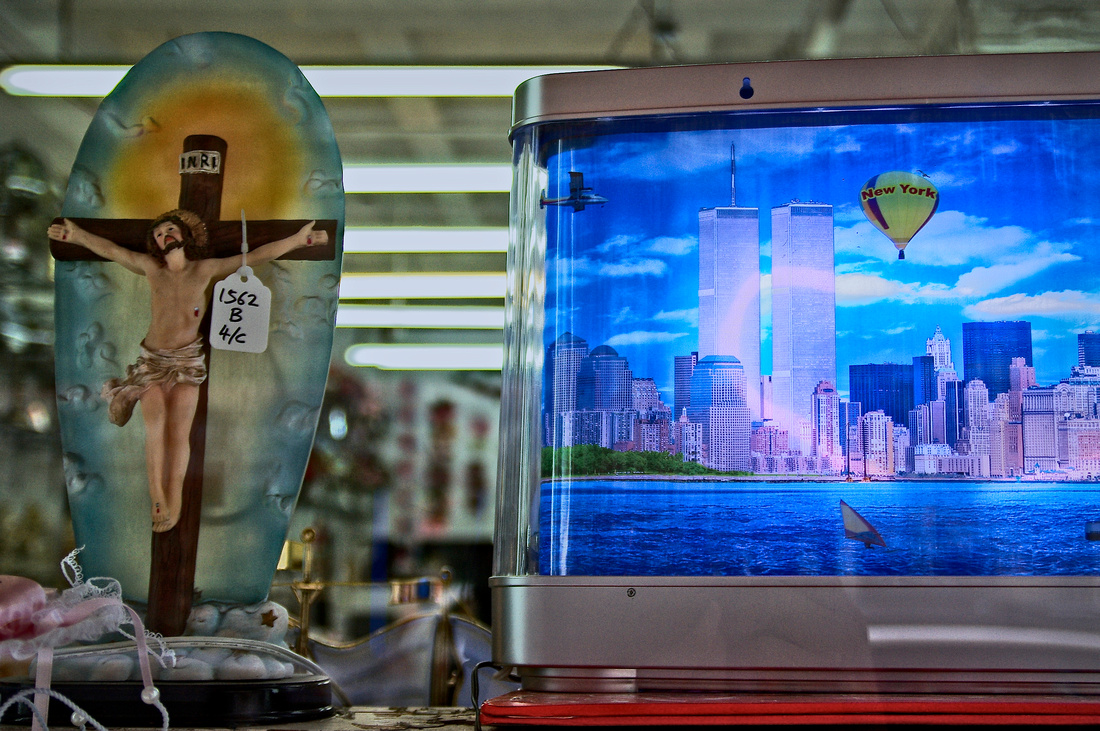My 2 Cents: Kertesz's Polaroids
When I went to the AIPAD show a few weekends ago, I saw thousands of great photographs but only a few I wanted to own. They were among the smallest objects there, nearly invisible amidst the multitude of VERY LARGE photos so in vogue in the marketplace. I am speaking of Andre Kertesz's polaroids.
Because I didn't have an extra $5000 - $7000 burning a hole in my pocket, however, I left the Park Avenue Armory empty handed. But I quickly acquired the next best thing -- Norton's recently published "Andre Kertesz: The Polaroids." Much has already been said about these images (see, e.g., here), and about this book (see, e.g., Ken Tanaka's review at TheOnlinePhotographer). I simply add my 2 cents: Beautiful work by an undisputed master, and a wonderful little book for any photography library.
Lots of examples can be seen here, the Stephen Bulger Gallery in Toronto, which sells some of the polaroids. Here are a few of my favorites (I apologize for the poor resolution):




Kertesz's polaroids also illustrate several truths about photography. The first is that, yes Virginia, it's all about the light. Nearly all the photographs were taken in Kertesz's Washington Square 1960s era apartment, which I imagine is no different from other apartments like it. So where did all this beauty come from? Kertesz's undeniable talent had a lot to do with it, of course, as well as his training in arranging interiors (gained through decades of near-anonymity while working as a staff photographer for "House and Garden"). But let's not discount the light that is essential to these pictures. Here is Kertesz's description of how he took advantage of the early morning and the late afternoon light, from the Preface:
"I worked mornings and late afternoons. With the morning light the sky is nice, and in hte late afternoon, full of variation. I would come out in the morning and shooting, shooting, shooting; no time to eat. I discover the time has gone, and no breakfast. The same in the afternoon . . . ."
A second truth is, as I suggested earlier, that bigger is not always better. These days, it seems that no print is ever smaller than13" x 19", and almost always much bigger than that. And while bigger is sometimes better (Jeff Wall or Andreas Gursky are good examples), something previously essential to photography is lost when the image literally overwhelms the viewer.
Photography is a poetic art, an art of suggestions. It is a Rorschach medium -- the best images do not tell, but show; they suggest many possibilities and invite contemplation, thought, appraisal. This aspect of photography was undeniable when images were small, and black-and-white to boot (thus taking away another layer of reality, and inviting additional contribution from the viewer). When a photograph becomes so physically large as to physically dominate the viewer, however, much of this quality is lost.
A final truth illustrated by the polaroids is that the photography is not about using the latest-and-best equipment, but about using the right equipment -- the tool fit for the purpose. Contrary to all the hand-wringing on Internet photography forums, one does not need the latest $5000 Nikon D3 to create memorable images. What it takes, rather, is an awareness of the tools at one's disposal, and an understanding of how best to use them. Here is Kertesz, again from the Preface: "You have to learn the the limits of the medium, and then learn to work on the edges of those boundaries."
***
I will conclude with something else. Several of the polaroids are shots taken southward from Kertez's apartment, and include the late World Trade Center towers. Here is one, though far from the best:
I never much liked the Towers during their lifetime. But like many New Yorkers, I now miss them quite a bit. Seeing images of them still, after nearly 7 years, bring back memories of that surreal day and the mourning that followed.
I am thus always intrigued when I see the Towers. This is a shop window on 28th Street, in the wholesale district, which I came across a few months ago:
The object on the right is one of those thingamajigs that turns and turns, with various objects (balloon, plane, boat, etc.) appearing to move through the background landscape. What caught my eye was the plane that flew directly toward the Towers. And of course Jesus as well, with an ID / price tag attached.
The window no longer looks like this. I shoulda bought the damn thing.
0 comments:
Post a Comment